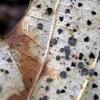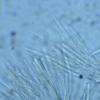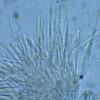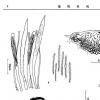
30-12-2025 16:44
Pascal DucosBonjour,Une anamorphe rose stipitée, très nombre

30-12-2025 17:14
 Bernard CLESSE
Bernard CLESSE
Bonjour à toutes et tous,Pourriez-vous aider Albe

29-12-2025 10:15
Hulda Caroline HolteHello, I found and collected this propoloid ascom

30-12-2025 09:04
Hello.A Pyrenomycete sprouting sparsely but very d

29-12-2025 17:44
Isabelle CharissouBonjour,J'aimerais savoir si d'autres personnes au

12-11-2021 00:03
Lepista ZacariasHi everybody,A week ago in my fiels trip I noticed

29-12-2025 17:12
 Bernard CLESSE
Bernard CLESSE
Bonjour à toutes et tous,Pourriez-vous m'aider à
Hello,
Coccomyces dimorphus, described by Liang et al. (Mycosystema, 19(1), p. 3-6, 2000),
has two types of asci (normal cylindrical and lanceolate) in a ascocarp.
Does anyone know other discomycetes having such dimorphic asci?
Kutsuna

A close study of the acus base woud perhaps clarify. Asci and paraphyses emerge from two separate hyphal systems. Often the ascogenous system carries croziers, the paraphysogen never.
Another possibility would by intrahymenial parasitism by another ascomycete, but this seems to me rather unllikely.
If you have a a pdf of the Liang paper I would be happy to see it. You could, e.g., attach as a nouveau fichier.
Zotto
Both type asci inamyloid, and I can't see croziers.
In Liang's paper, paraphyses are "rare", I can't observe thread-like paraphyses.
I send Liang's paper ?mainly in Chinese??by e-mail.
Kutsuna






